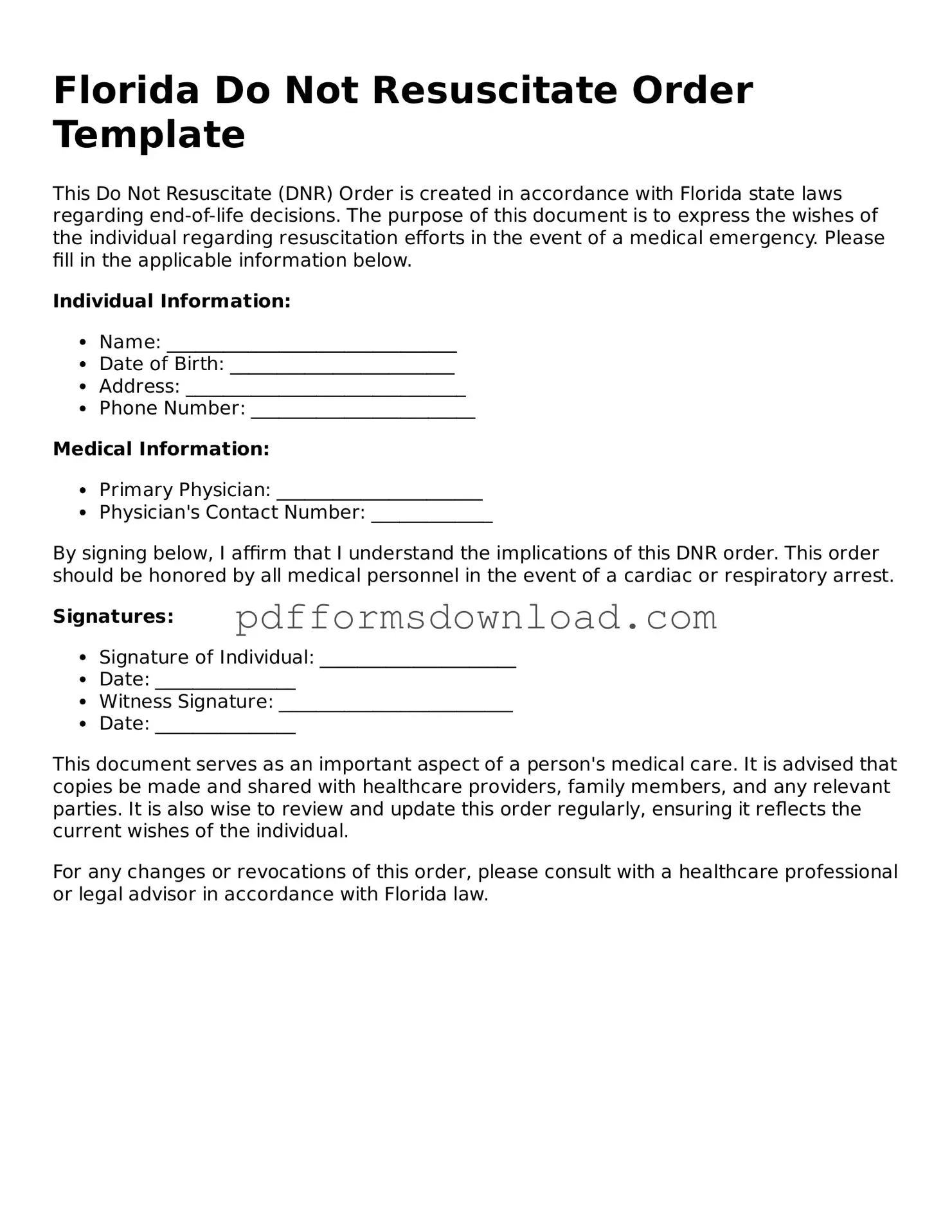What is a Florida Do Not Resuscitate Order (DNRO)?
A Florida Do Not Resuscitate Order is a legal document that allows a person to refuse resuscitation efforts in the event of cardiac arrest or respiratory failure. It is designed for individuals who have a terminal illness or are in a state where resuscitation may not improve their quality of life. This order must be signed by a physician and is intended to ensure that a person's wishes are respected in medical emergencies.
Who can request a DNRO in Florida?
Any adult who is capable of making their own medical decisions can request a DNRO. This includes individuals with terminal illnesses or those who wish to have control over their end-of-life care. Additionally, a legal guardian can request a DNRO on behalf of a person who is unable to make their own decisions.
How is a DNRO created in Florida?
To create a DNRO in Florida, a physician must complete and sign the official Do Not Resuscitate Order form. This form must include the patient’s name, the physician’s signature, and the date. Once completed, the patient or their representative should keep a copy of the form in an accessible location, such as with their medical records or on their person at all times.
Is a DNRO valid in all medical settings?
Yes, a DNRO is valid in all medical settings in Florida, including hospitals, nursing homes, and private residences. However, it is important to ensure that the form is properly completed and signed by a physician. Medical personnel are required to honor the DNRO as long as it is valid and accessible when needed.
Can a DNRO be revoked?
Absolutely. A DNRO can be revoked at any time by the person who created it. This can be done verbally or in writing. It is essential to inform medical personnel and keep a record of the revocation to ensure that your current wishes are understood and respected.
What happens if a DNRO is not available during a medical emergency?
If a DNRO is not available during a medical emergency, medical personnel are required to provide standard resuscitation efforts. This means that if the DNRO is not presented at the time of the emergency, the default response will be to attempt resuscitation. Therefore, keeping the DNRO accessible is crucial.
Are there any limitations to a DNRO?
While a DNRO allows individuals to refuse resuscitation efforts, it does not cover other types of medical treatment. For instance, it does not prevent the administration of pain relief or other comfort measures. Additionally, a DNRO does not apply if the person is not in a state of cardiac arrest or respiratory failure.
How can I obtain a Florida DNRO form?
You can obtain a Florida DNRO form from various sources, including healthcare providers, hospitals, or online through the Florida Department of Health’s website. It’s important to ensure that you are using the most current version of the form to ensure its validity.
